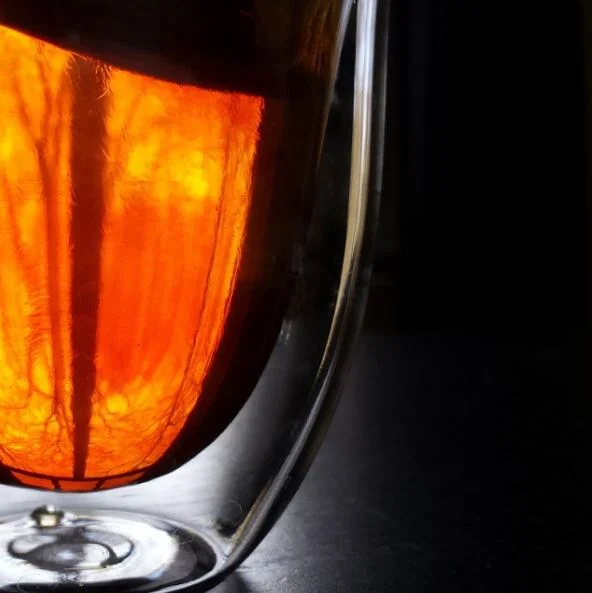Steve Faulkner & Katy Griggs - Loughborough University
Refreshing – or a sentence to sweat? – Image Credit: C. Verhagen
I remember as a child, on the rare warm days that we used to get in Britain, my grandmother telling me to “have a cup of black tea … it will help cool you down”. As a seven-year-old, this seemed like a crazy idea, especially when all I wanted was a cold lemonade and another ice cream. But it appears that this old wives’ tale may actually be more Stephen Hawking than Stephen King.
The idea of drinking hot drinks in warm weather goes back hundreds of years. Tea, or “chai” is one of the most popular drinks in India, and many of the leading consumers of tea per capita are in tropical or desert regions. Recently, evidence has begun to emerge that drinking hot drinks may really help to cool you down, too.
In 2012, Ollie Jay published the first of a series of papers to see if drinking a warm drink can actually lower the amount of heat stored by the body compared to a cold drink. In this first study, volunteers were asked to cycle at a relatively low intensity for 75 minutes in around 24°C heat, 23% relative humidity, while consuming water at either 1.5˚C, 10˚C, 37˚C or 50˚C.
The change in core temperature was slightly greater when 50˚C water was ingested compared to 1.5˚C and 10˚C water. However, when the authors considered the effect of drink temperature on body heat storage, which is a better indicator of total body temperature, the results were very different. Following the ingestion of the warm drink, overall body heat storage was actually lower following exercise than with cooler drinks.
The sweat factor
An explanation for these findings appears to be related to how sweating may be influenced by drink temperature. Sweating, and more importantly the evaporation of this sweat, is one of the key avenues for modulating body temperature and maintaining heat balance.
Due to the increased heat load from drinking a warm drink, there is a compensatory increase in overall sweat output, which outweighs the internal heat gain from the warm drink. Consistently, a 50˚C drink results in a higher whole body sweat loss (around 570ml vs about 465ml for 1.5˚C). In practical terms, this means that more sweat is produced which is evaporated from the skin surface, increasing heat loss from evaporation and reducing body heat storage.
Cold water: should he drink it? - Image Credit: marvent via Shutterstock / HDR tune by Universal-Sci
Importantly, however, this study was conducted under conditions that allowed complete evaporation of sweat – in other words dripping sweat was limited by maintaining a good airflow and keeping humidity low. The results would likely be different in conditions where sweat evaporation is limited, such as in hot and humid conditions. In fact, drinking cold drinks may be more favourable in these circumstances, minimising inefficient sweat losses – dripping sweat – and consequently aiding an individual’s hydration status.
Mouth or stomach?
In a second study, Jay aimed to establish the effect of drink temperature on local sweat rate, and to determine the location of thermoreceptors that may influence sweating. They demonstrated that with differing drink temperatures, colder drinks (1.5˚C) resulted in reductions in local sweat rate compared to when warm drinks were ingested (50˚C), despite identical changes in core and skin temperature.
Interestingly, however, differences in the sweat response were found when fluid was either swilled around the mouth or delivered directly to the stomach via a nasogastric tube. The data showed that only when cold drinks were delivered directly to the stomach did they result in reduced local sweat rate. This data indicates that the sensors responsible for influencing the sweat response, and therefore regulation of body temperature, reside somewhere in the abdominal cavity.
In a third study conducted in their lab, the team asked people to consume either 37˚C fluid or ice during exercise. In agreement with their previous work, they showed that there was a reduction in heat loss following ice ingestion compared to fluid at 37˚C, as a result of reduced sweat evaporation from the skin surface.
This has implications for endurance performance in the heat. In essence, where changes in body temperature are known to influence performance, ice ingestion could result in an increase in body heat, negatively influencing endurance capability. The ingestion of an iced drink prior to exercise and in hot and humid environments, however, should be beneficial.
So, depending on your environmental conditions, maybe reaching for that cup of tea isn’t such a crazy idea after all. Plus the moral of the story: listen to your grandmother’s advice – it’s based on years of experience.
Source: The Conversation


















